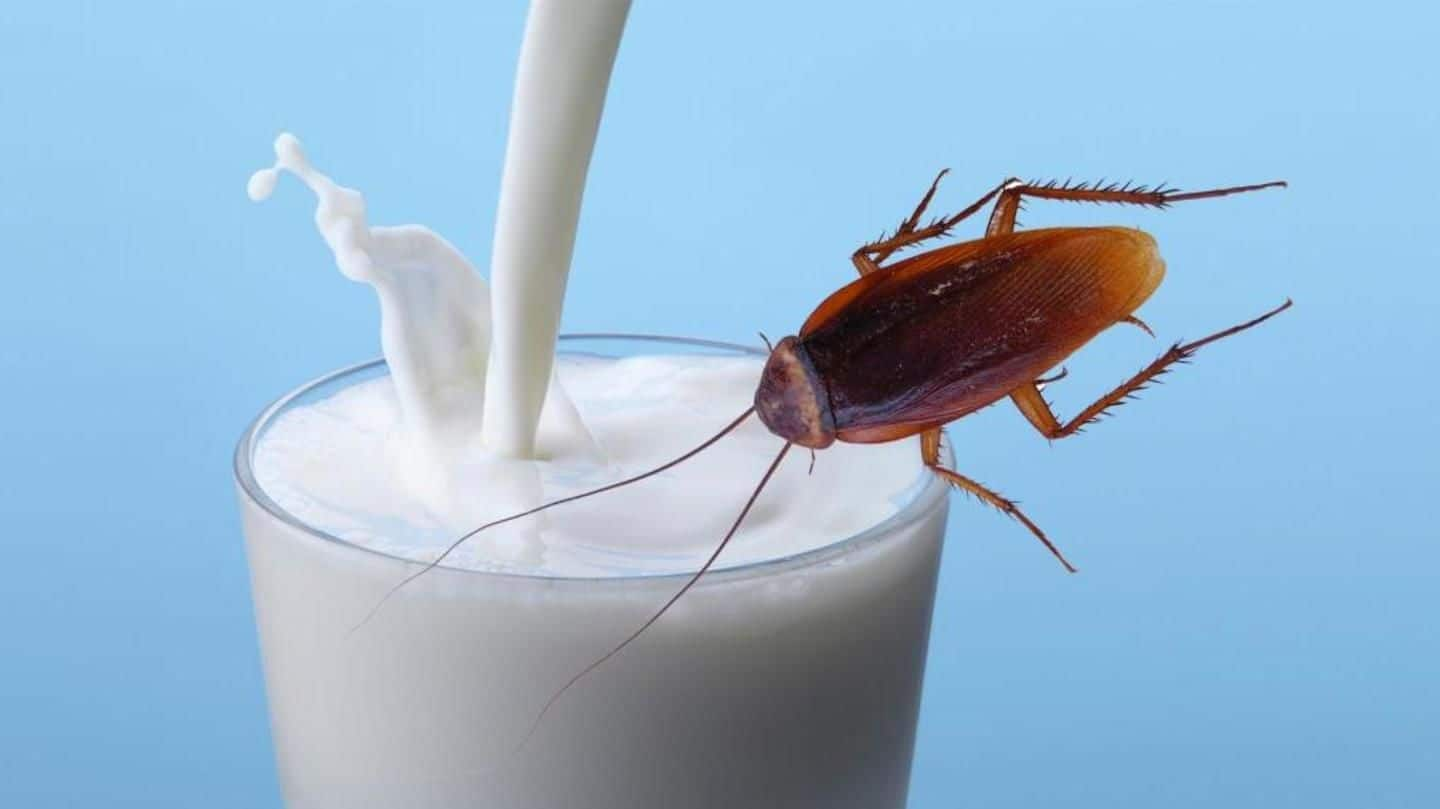
Seems like 'superfood', cockroach milk is here to stay
What's the story
It may sound preposterous, but cockroach 'milk' might just become a mass-produced super health food in the near future. Earlier, we had reported that new research had found cockroach milk to be super nutritious. Now, owing to advances, scientists are hoping to produce cockroach milk in much larger quantities. But wait. What cockroach milk? Since when do cockroaches produce milk? Worry not. We'll explain.
Do you know?
Why is cockroach milk considered to be a superfood?
Cockroach milk comprises proteins, fats, and sugars and contains all the amino acids required for cell growth. The energy profile of cockroach milk makes it more wholesome, and it is four times more energy-dense than cow milk; three times more than buffalo milk.
Cockroach milk
Since when do cockroaches produce milk?
In 2016, an international research team found that Pacific Beetle Cockroaches, scientifically known as Diploptera punctata, could produce 'milk'. Diploptera punctata, unlike other cockroach species which lay eggs, gives birth to live babies which are formed within the mother's body. To feed its young, the female cockroach secretes a protein-rich substance, like milk in mammals, and it is this substance which grabbed researchers' attentions.
Information
Cockroach milk, in fact, is crystalline in nature
To get cockroach milk, which is more like a consistency of crystals than liquid milk, scientists have to extract it from a cockroach's midgut. Pacific Beetle Cockroaches start lactating for their offspring at around 40 days old, and this is when milk has to be extracted.
Milking a cockroach
Scientists sequence genes owing to difficulties in mass-milking cockroaches
However, the process of milking a cockroach is a labor-intensive one, and not particularly efficient - it takes half a day to manually process the milk of two-three cockroaches. Consequently, understanding that milking cockroaches for mass-production wasn't feasible, researchers from the Institute of Stem Cell Biology and Regenerative Medicine, Bangalore, sequenced the genes responsible for producing the protein-rich crystals.
Mass-production?
You can expect cockroach milk pills in the near future
Owing to minuscule quantities organically produced, 100 grams of cockroach milk would involve the killing of more than 1,000 cockroaches, and that's not feasible. But now that scientists have the sequence, they are hoping to get yeast to produce the protein-rich crystals in larger quantities, thereby creating possibilities of future mass-production. It's expected that cockroach milk would come in the form of pills.